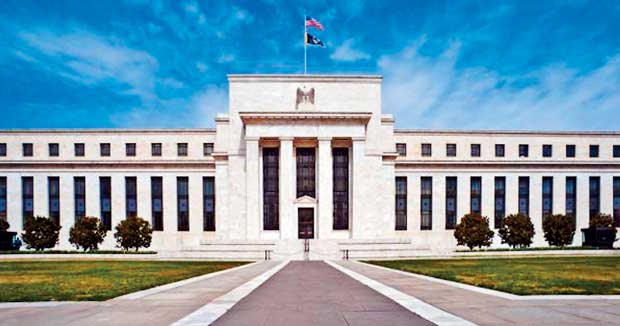28 Dec 2017 - {{hitsCtrl.values.hits}}

 The US Federal Reserve met market expectations when it raised the federal funds rate by 25 basis points to a target range of 1.25 percent-1.5 percent at its December Federal Open Market Committee meeting. It will likely raise the rate three more times in 2018. It now seems clear that US monetary policy normalization will continue against the backdrop of robust growth, a strong labour market and weak inflation.
The US Federal Reserve met market expectations when it raised the federal funds rate by 25 basis points to a target range of 1.25 percent-1.5 percent at its December Federal Open Market Committee meeting. It will likely raise the rate three more times in 2018. It now seems clear that US monetary policy normalization will continue against the backdrop of robust growth, a strong labour market and weak inflation.
Over the short run, the rate hike will have limited influence on Asian financial markets.
First, the normalization of US monetary policy has been fully anticipated due to the Fed’s clear communication. The move was therefore incorporated into market prices, which explains why Asian and global financial markets stayed calm this time, in contrast to the Taper Tantrum of May 2013.
Moving in tandem
Second, while some major central banks are following the Fed’s rate move, their policies are primarily dictated by their countries’ economic conditions. While the European Central Bank announced quantitative easing tapering plans in October and the Bank of England hiked its policy rate in November, both kept their policy rates unchanged in December.
Rate divergence
Third, emerging Asian central banks are marching to their own beat. Despite the ongoing rate hikes and balance sheet normalization in advanced economies led by the Fed, most Asian central banks are maintaining their current interest rates except the Hong Kong Monetary Authority and Bank of Korea.
Moreover, some Asian central banks such as Reserve Bank of India, Bank Indonesia and State Bank of Vietnam lowered policy rates earlier this year to boost growth. Relatively subdued inflation throughout the region gives the central banks some policy room to cut interest rates.
Indeed, in December the Asian Development Bank (ADB) cut its 2017 inflation forecast for the region from 3.0 percent in April to 2.4 percent despite a recent pickup in global commodity prices. The refusal so far of most Asian central banks to follow the Fed reflects underlying confidence about the resilience of their economies and financial systems against the shock of higher US interest rates.
The gradual, anticipated and clearly communicated nature of the Fed rate hikes and the general absence of monetary tightening in the region, limit the short-term impact of the US December rate hike on Asian financial markets.
Back to fundamentals
A repeat of the Taper Tantrum, which roiled financial markets in Asia and elsewhere, is highly unlikely. Furthermore, Asian countries hit hardest during that episode of financial stress, most notably India and Indonesia, have used the breathing room afforded by the gradual pace of US interest rate hikes to reinforce their fundamentals.
In the medium term, however, higher US interest rates herald an ongoing tightening of global liquidity conditions. Balance sheet normalization by the Fed and ECB as they unwind massive holdings of assets purchased during quantitative easing programmes will further tighten global liquidity, as will ongoing deleveraging in many economies.
Valuation pressure
Asia can thus expect higher financing costs in the medium and long term. The US dollar has posted strong gains since the second half of 2014. Further reduction of the interest rate differential between the US and emerging markets would weaken the attractiveness of emerging market assets and thus pose valuation pressure on asset prices in emerging Asia.
Despite the region’s solid economic growth and fundamentals, its monetary authorities are well advised to monitor liquidity conditions, especially in sectors with high leverage and exchange rate exposure. One factor which may mitigate higher long-term financing costs is the recent trajectory of global inflation, which remains stubbornly subdued despite robust global growth momentum. Since inflation is a major determinant of long-term interest rates, low inflation will help keep long-term financing costs down.
The Fed’s rate hike won’t have much impact in emerging Asia, especially in the short run. However, over a longer time horizon, Asian economies need to maintain strong fundamentals and keep a close eye on liquidity conditions to protect financial stability.
(Donghyun Park is Principal Economist, Economic Research and Regional Cooperation Department, the Asian Development Bank. Shu Tian is an Economist, Economic Research and Regional Cooperation Department)
04 Jan 2025 3 hours ago
04 Jan 2025 3 hours ago
04 Jan 2025 4 hours ago
04 Jan 2025 4 hours ago
04 Jan 2025 5 hours ago